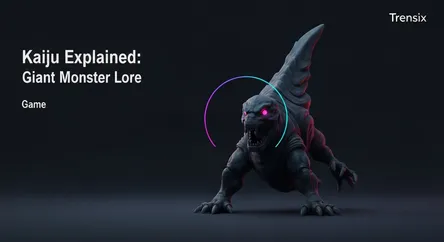Game
Kaiju Explained: Giant Monster Lore

What are Kaiju? Uncover the lore behind Japan's giant monsters, from Godzilla to their impact on video games and the epic MonsterVerse saga.
What is it?
Kaiju is a Japanese term for "strange beast," but globally it means giant, city-destroying monsters. The genre was born from post-war nuclear anxieties with the 1954 film Godzilla. These creatures are often depicted as ancient forces of nature or mutated horrors awakened by human folly. While Godzilla is the most famous, the roster includes iconic monsters like Mothra, King Ghidorah, and Gamera. They are powerful symbols of nature's wrath and the consequences of technology.
Why is it trending?
Kaiju are stomping back into pop culture, driven by cinematic universes like the MonsterVerse (Godzilla vs. Kong) and films like Pacific Rim. This has created a huge ripple effect in gaming. Titles like Kaiju Wars and Godzilla Battle Line are popular, but their influence is wider. Many games feature "kaiju-sized" boss battles that push players to their limits, creating epic encounters that provide a true sense of scale and awe. These moments have become a staple in modern game design.
How does it affect people?
Kaiju represent overwhelming, uncontrollable forces, tapping into our fascination with the colossal. Originally metaphors for nuclear war, they now often symbolize modern anxieties like climate change. In games and media, they offer a unique form of escapism and a thrilling power fantasy. Whether playing as the destructive monster or the hero fighting it, the experience provides an epic sense of scale. This enduring appeal makes kaiju an influential fixture in modern lore, allowing us to confront huge fears in an entertaining way.